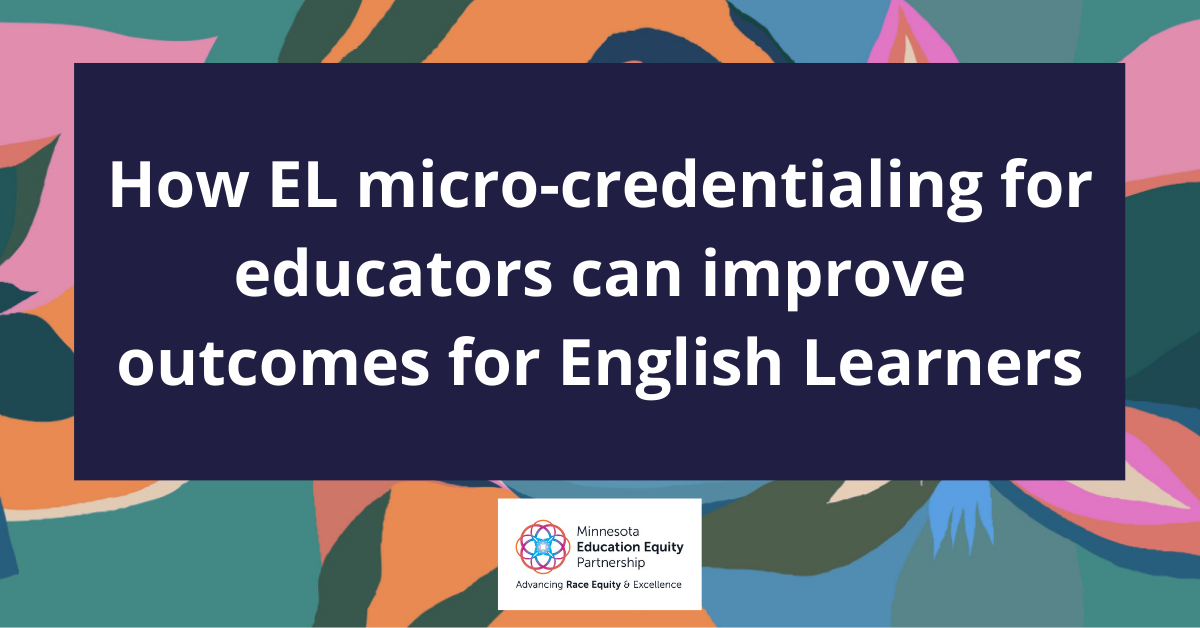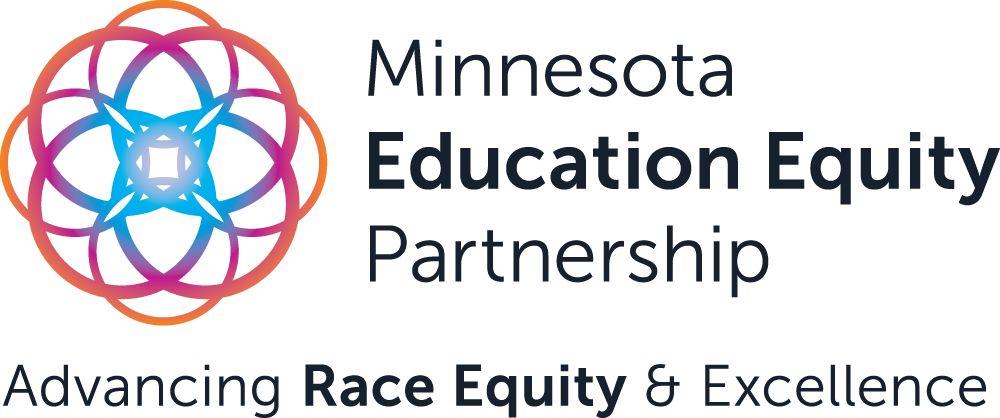
How Minnesota can address its education debt to English Learners
EL micro-credentialing for educators is a critical pathway for increasing support for English Learners
Today, Minnesota’s foreign-born population makes up 12 percent of the workforce, according to the most recent Census.
In communities across Minnesota, immigrants are filling much-needed roles in food, retail, software engineering, and health care as baby boomers retire and birth rates across the state decline.
Yet as the state’s immigrant population steps into crucial roles within the Twin Cities and rural workforce, providing both a renewed economic and social vitality across the state, the reciprocal support for their children’s education—particularly for English Learner (EL) students—lags behind.
Until last year, the basic state subsidy per EL student per year—the amount over the general fund per student—remained at $704 since 2003. That means for 20 years, while the general fund increased by 47 percent, EL funding remained stagnant.
This long-standing education debt has put Minnesota in the position of playing catch-up as student outcomes continue to reflect ongoing underfunding for EL students.
What’s more, the state is grappling with a critical shortage of qualified EL educators and rising EL-student-to-EL-teacher ratios, intensifying the urgency to immediately address these widening disparities.
EL advocates are proposing micro-credentialing as one solution, aiming to equip all educators—not just EL specialists—with the knowledge, tools, and skills to support the diverse needs and aspirations of EL students across all subject areas.
Minnesota’s EL education debt continues to result in deep disparities
As Minnesota’s communities evolve, so too does the linguistic landscape of its residents. Currently, about 12 percent of Minnesotans speak a language other than English at home, according to the U.S. Census, a figure that is both a testament to the state’s growing diversity and a need for critical investments in EL students and their families.
In Minnesota, EL students represent the fastest-growing student demographic, accounting for approximately 9 percent of all public school students in the 2023-2024 school year.
Despite this growth, a chronic lack of funding and support for both EL educators and EL students is not merely impeding the progress of many of Minnesota’s EL students; it’s actively deteriorating their educational achievements.
The 2022 high school graduation rate for all students was 83.6 percent; however, for English Learners, it was at only 65 percent, according to the Minnesota Report Card.
In 2022, 58 percent of high school graduates enrolled in a college or university, while only 40 percent of EL students did, according to Minnesota SLEDs data. What’s more, the percentage of EL high school graduates not enrolling in a college has steadily increased since 2015, when 51 percent of EL high school graduates enrolled in college, and 68 percent of all graduates enrolled in college.
However, this is more than a matter of numbers. These ongoing disparities are the result of a historic lack of critical investments and culturally validating initiatives to support the unique needs and aspirations of EL students.
Minnesota must take swift action now if it wants to increase its high school graduation and post-secondary credentialing rates and ensure a thriving, robust economy across the state. And that means building the capacity for educators—and the Minnesota Department of Education— to support the growing number of EL students in Minnesota.
The potential of EL micro-credentialing
This urgent necessity for Minnesota to enhance its support for EL students comes alongside a nationwide imperative to invest in EL students and EL educators.
Last year, the White House proposed devoting $1.2 billion in fiscal year 2024 to support EL students in gaining English proficiency — a $305 million increase over the current amount. The administration is also pushing for an additional $90 million to build multilingual teacher pipelines through Grow-Your-Own initiatives and $10 million for post-secondary fellowships to further bolster the educator pool.
Nationwide, 76,443 additional EL educators are needed in the next five years to support the growing number of EL students.
In Minnesota, the challenge is not just to meet the demand for more EL educators but to address a significant education debt to EL students—a consequence of ongoing historical and structural, cumulative deficits in EL funding, resources, and educator support.
In the face of these unmet educational needs for EL students, Minnesota is looking towards innovative policy solutions. Among these, EL micro-credentialing for educators promises a much-needed fast-track pathway for addressing the state’s immediate need to increase educator capacity for supporting positive outcomes for EL students.
Micro-credentialing for educators isn’t new, but it’s grown in popularity in the last few years as educators look for ways to grow their salary and bolster their ability to support the needs and aspirations of a diverse student body.
If EL micro-credentialing is implemented in Minnesota, educators specializing in subjects like history or science, for instance, can pursue EL micro-credentialing.
This allows general educators to gain the competencies and tools needed to honor the goals and needs of EL students in every classroom setting, embracing multilingualism as a classroom asset that supports enriched learning experiences for all students.
With the increasing EL-student-to-EL-teacher ratios posing deep challenges for Minnesota’s EL educators, the introduction of new micro-credentialing policies offers them a much-needed lifeline. EL educators say new micro-credentialing not only address a need for more educator supports; they pave the way for a more supportive and dynamic learning environment for EL students.
Studies supporting micro-credentialing for teachers highlight its potential as an innovative approach for educator professional development, reflecting a shift toward more competency-centered, outcome-focused teacher education instead of traditional teacher licensure pathways that focus solely on “seat time” for credit fulfillment.
A case study conducted by the Center for Teaching Quality showed that teachers who earned micro-credentials reported changes in their teaching practices that positively affected student learning. The specificity of micro-credentials allowed teachers to implement new strategies and practices with a clear understanding of their impact on student outcomes.
This strategic emphasis on student outcomes, in addition to one-time and ongoing financial investments in investments in EL students, highlights the transformative potential of micro-credentials in elevating the success of EL students and, by extension, the state of Minnesota.
How micro-credentialing can help Minnesota meet state mandates
Along with a moral imperative to support the success of EL students, Minnesota statutes and mandates require equitable funding and supports for EL students in order to uphold their rights to an adequate education, as enshrined in the Minnesota Constitution.
However, despite Minnesota’s legislative efforts last year to cover up to 87 percent of EL education costs, the funding inadequately matches the actual needs of EL students and their teachers. More so, this funding boost, unlike the general fund, does not account for inflation year to year, again widening the EL education debt over time.
In addition, the Minnesota Learning English for Academic Proficiency and Success (LEAPS) Act, enacted in 2014, calls for our state to progressively support multilingual learners and their families, including providing teacher and administrator development to effectively support multilingual learners.
Yet the current shortage of qualified EL educators and the persistent inequities in EL student outcomes threaten to undermine these objectives.
EL advocates and educators say advancing micro-credentialing is critically needed now to address the need to support EL students both in the classroom and beyond.
With Minnesota’s growing number of students of color, Indigenous students, and first-generation students, all Minnesota educators should be equipped with the tools and competencies needed to support and validate the unique linguistic, cultural, and racial diversity of students in all classroom settings.
Yet achieving these mandates set forth by the state transcends mere pledges; it requires concrete actions to redress the considerable educational debt that undermines the potential of EL students.
This is why educators across the state are standing in support of new micro-credentialing pathways, recognizing them not just as a means for vital professional development, but as a foundation for building a robust, racially just education system where every student—and teacher—has the opportunity to thrive.

